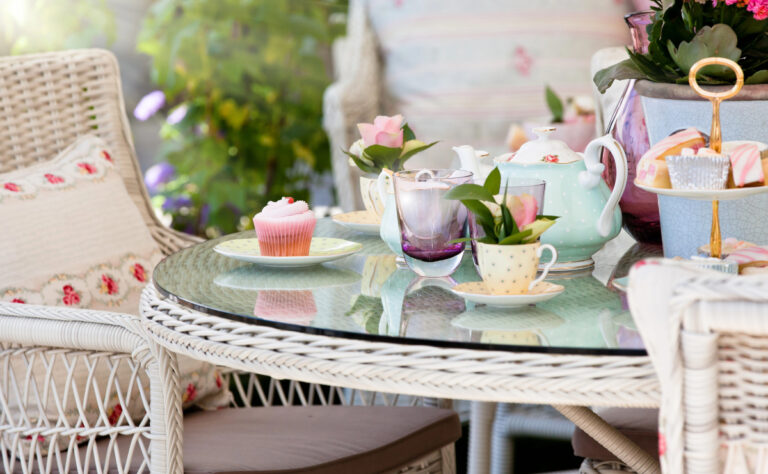A tea party is a social gathering centered around the serving and enjoyment of tea and light refreshments. They can range from informal get-togethers among friends to elaborate, formal events with strict adherence to tradition.
Historical Background
- British Origins: The concept of the tea party is deeply rooted in British culture. Afternoon tea became a fashionable social event in the 1840s, popularized by Anna Russell, the seventh Duchess of Bedford. She began the practice of taking tea and light snacks in the afternoon to bridge the gap between lunch and a late dinner.
- Social Significance: Tea parties became an opportunity for the upper class to socialize, discuss current events, and display fine china and linens. They played a significant role in the social lives of women, offering a respectable venue for social interaction.
Types of Tea Parties
- Afternoon Tea:
- Time: Typically held between 3 p.m. and 5 p.m.
- Menu: Includes finger sandwiches, scones with clotted cream and jam, and an assortment of pastries.
- Ambiance: Formal setting with fine china, silverware, and adherence to etiquette.
- High Tea:
- Time: Served in the early evening, around 5 p.m. to 7 p.m.
- Menu: A more substantial meal with meat dishes, bread, and vegetables, in addition to tea.
- Origin: Historically associated with the working class in Britain as a post-work meal.
- Cream Tea:
- Menu: A simpler version featuring tea served with scones, clotted cream, and jam.
- Popularity: Especially common in the Devon and Cornwall regions of England.
- Themed Tea Parties:
- Concept: Based on specific themes like literature, historical periods, or cultural motifs.
- Examples: Mad Hatter’s tea party inspired by Lewis Carroll’s Alice’s Adventures in Wonderland.
- Children’s Tea Parties:
- Purpose: A playful and educational activity to teach children about manners and social interaction.
- Features: Miniature tea sets, simple snacks, and often a dress-up element.

